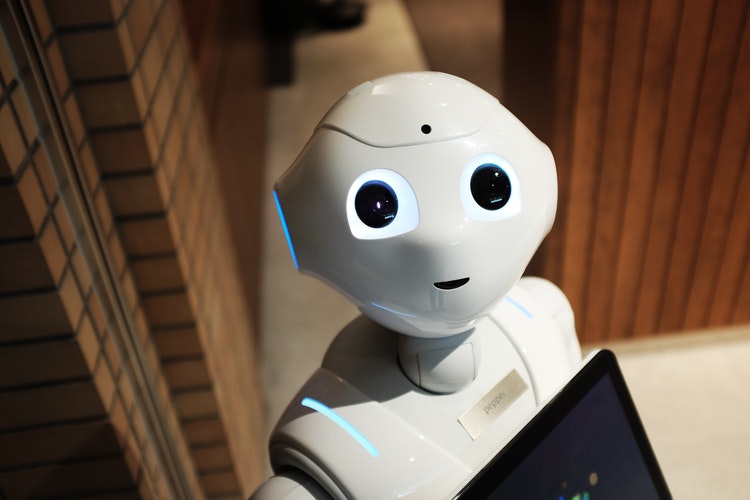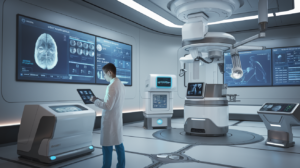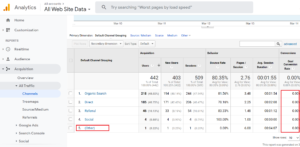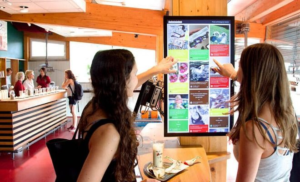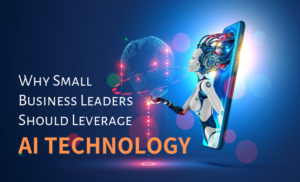If you asked many people how long before a Jetsons technological utopia is reality, many would likely tell you that it’s a hundred or more years from now. But it’s honestly not that far away. The 1960s vision of The Jetsons was set in 2060, and here we were in 2020 with most of the Jetsons technologies already available to us. Except AI robot maids, which are a lot closer than you might think.
“True, there’s still a lot of work to be done in regards to AI and machine learning, but we also have to consider the legal challenges of patenting AI-driven technologies.”
When inventors are tied up in courts trying to patent their inventions, the pace of technology growth can become a bit slowed down. So in this article, we’re going to explore the challenges and possible solutions for patenting artificial intelligence.
What counts as AI Inventions?
As an umbrella term, “AI inventions” encompasses the following two categories:
- Inventions that make use of AI.
- Inventions that are created by AI.
Inventions that make use of AI
This category broadly covers software and hardware inventions that are used to run AI, which can be related to AI algorithms, collection, training data, storage, and other things. To summarize, inventions that make use of AI would be practically anything man-made for the purpose of utilizing artificial intelligence.
Inventions that are created by AI
The second category refers to AI-identified solutions to problems or those which have been identified to the AI by a human. This is a very hot topic and debate in legal circles, reaching all the way to policymakers, as attempts to clearly define “inventions created by AI” are rather contentious.
When it comes to inventions created by AI, it may not be a question of how long does it take to get a patent, but rather whether it’s even eligible for a patent at all.
Typically, patent law refers to inventions that are created by natural persons. There have been several cases of patent applications being rejected because the inventions were “developed” explicitly by artificial intelligence.
For example, an AI called DABUS, through neural network combing through and connecting concepts was able to “invent” a new type of beverage container. Courts in European countries and the United States rejected the patent on the grounds that only humans can be named as inventors in a patent application.
The difficulties of patenting AI inventions
Both of those above categories come with their separate difficulties in filing patents. Obviously, the 2nd category has many on-going debates, and it’s quite difficult to give any concrete answers here. Many things are being challenged and it will be interesting to follow developments in the legality of patents for inventions created by AI.
As for inventions that make use of AI, that is far simpler and fairly straight-forward, though not without its own hurdles.
“For starters, the patent claim needs to meet all the requirements of patentability. This should be simple enough, but inventions utilizing AI pose their own set of problems for patents.”
Patent applicants need to be careful to make sure their claims avoid patent-ineligible, abstract concepts. Algorithms or specific uses of existing technology will certainly create problems for patent claims. According to U.S. law, you cannot directly patent an algorithm. However, you may be able to patent the series of steps in your algorithm.
However, this more aptly refers to computer software, because computer software is considered a finished product. Machine software on the other hand is considered fairly abstract.
So basically, your patent has to avoid falling into any of the following criteria:
- Laws of nature
- Physical phenomena
- Abstract ideas
So with regard to machine learning and AI, a major difficulty in obtaining a patent is due to these creations being regarded as abstract concepts, because machine learning and AI typically fall into these categories:
- Mathematical concepts
- Methods of organizing human activity
- Mental processes
Possible solutions to AI patents for inventors
One possible route for patent applications may essentially boil down to how solutions created by AI are defined. For example, a natural person developed the algorithm and wrote the code that powers the AI. The AI itself identified and solved a problem.
So the question regarding whether the solution given by AI is whether the human or the AI invented the solution. The premise of the debate in most cases is whether the natural person created the solution by creating the AI, or if the solution was a result of the AI’s organic capabilities, outside the control of a natural person.
So overall, a human being needs to clearly demonstrate the steps in their algorithm that led the AI to solve a problem. In other words, your AI can’t miraculously come up with a solution, and you have no idea how it happened, and then file a patent for the solution. You need demonstrable evidence that the AI was under your control and being directed by you.
Also, Read How Digital Transformation Powering AI and Hybrid cloud

